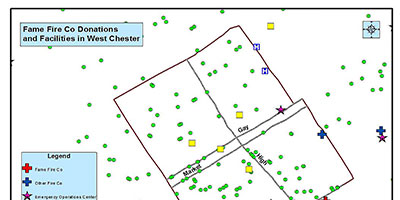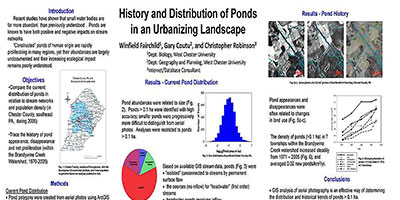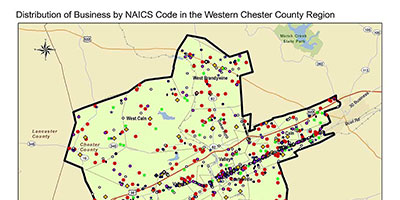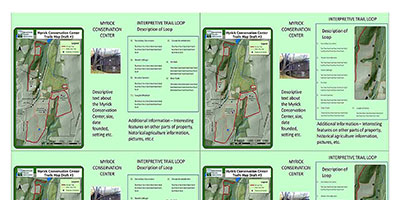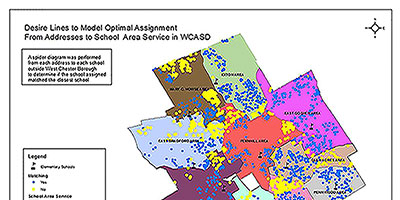Download Poster Presentations
- Fame Fire Co Donations and Facilities in West Chester
- History and Distribution of Ponds in Urbanizing Landscape
- Desire Lines to Model Optimal Assignment From Addresses to School Area Service in WCASD
- Distribution of Business by NAICS Code in the Western Chester County Region
- Myrick Conservation Center
Forest Bathing: Exploring the Spatial Relationship between Trees and Mental Health
There are numerous studies that have identified the links between human health and the presence of nature, however a comprehensive body of work examining the relationship between specific facets of health with various elements of nature is lacking. In Japan, there is a relatively new term for linking one aspect of health, mental well-being, with a specific element of nature, trees. Proponents of Shinrin-yoku, or forest bathing, posit that time spent in forests serves as a recognized mental therapy. Indeed certain species of trees in Japan are considered to contribute more to increased mental well-being than others, and some forest areas in Japan have become official Forest Therapy Bases and Forest Therapy Roads. To further explore this link between trees and mental health, we asked if a statistically significant, positive relationship between several mental health variables and tree abundance variables could be identified. We performed statistical analyses using mental health data from the National Survey on Drug Use and Health and tree abundance data from the U.S. Forest Service’s Forest Inventory & Analysis (FIA) program across 55 regions in the United States. Our investigation continues, but our findings show a positive and statistically significant relationship between major depression and tree biomass. To our knowledge, this is the first study performed to explore quantifying the relationship between mental health and tree measures at this scale in the U.S. Forest Bathing
The economic impact of greening urban vacant land: a spatial difference-in-difference analysis
Vacant land is a serious problem in many cities, and cities have recently begun to explore greening as a management strategy to reduce the negative influence of vacancy. The city of Philadelphia, Pennsylvania pioneered theuse of a simple greening treatment—removal of debris coupled with planting grass and trees—as a means of improving blighted communities The Economic Impact of greening urban vacant land.
Green Legacy Project
Urban trees, including those found on many college campuses, can contribute to sequestering and storing carbon, mitigating urban heat island effects, ameliorating air pollution, reducing stormwater runoff, improving water quality, providing habitat for native species, and enhancing aesthetics. In order to better understand and thus maximize the benefits provided by our campus trees, a collaborative group of faculty, staff, and students at West Chester University initiated the Green Legacy Project
Identification of Old-Growth Forest Reference Ecosystems Using Historic Land Surveys
Old-growth forests in the American West typically represent fragments of former, more extensive forests that were subjected to nineteenth and twentieth century land-clearing activities, such as logging. These present-day forest fragments are thought to be representative of the former landscape, and thus are capable of serving as living references for guiding restoration of logged forests. Yet how do we determine the extent to which existing old-growth stands represent the former forest, especially when little of the surrounding original vegetation remains? Historic land surveys conducted prior to significant logging can reconstruct the former forest at the stand level, thereby allowing an analysis of old-growth patches within the larger historic landscape. This study utilized original Public Land Surveys to assess the applicability of old-growth stands in Redwood National Park as reference ecosystems. Old-Growth Forest
PreEuroAmerican settlement forests in Redwood National Park
Extensive logging in the twentieth century destroyed much of the coniferous forests in the lower Redwood Creek basin of Redwood National Park. Restoration of cutover lands requires the identification of historical, pre-logging reference conditions. Field notes from the original Public Land Surveys were used to reconstruct the pre-EuroAmerican settlement forests. Pre-EuroAmerican settlement

